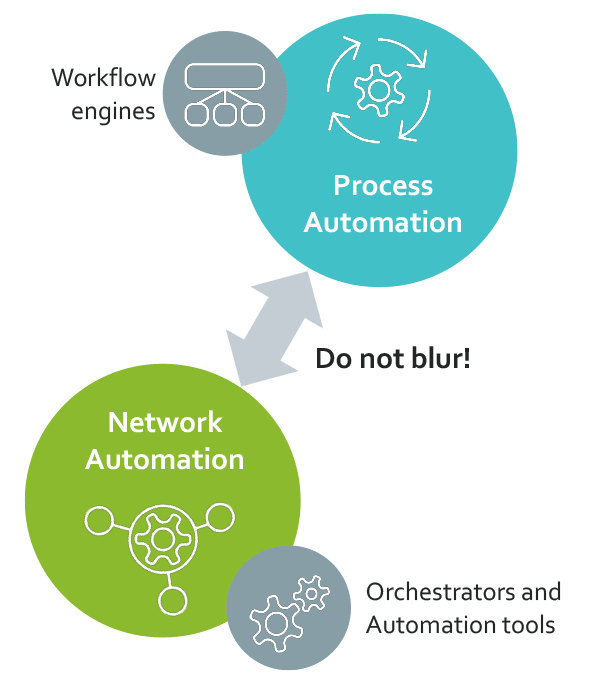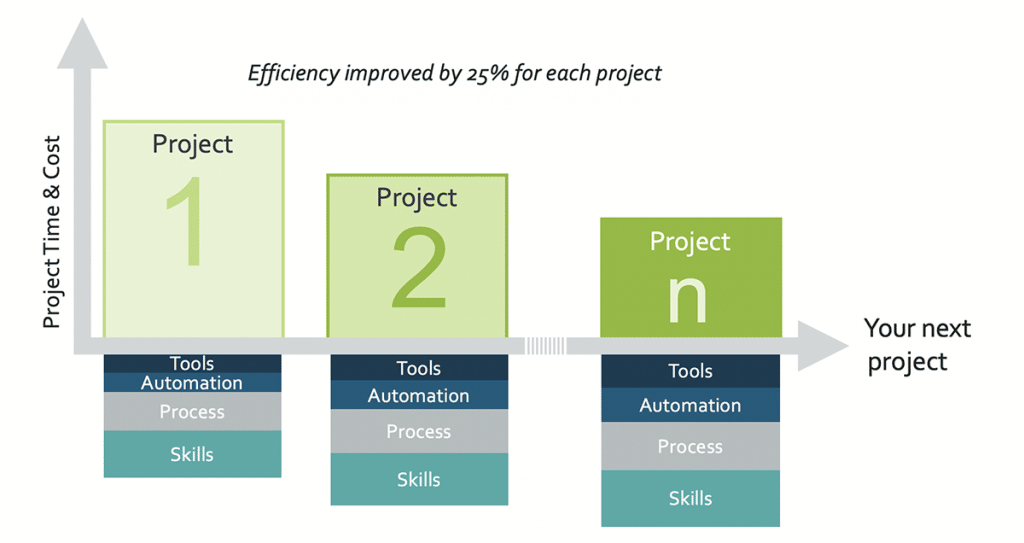Network automation is the continuous activity of transforming your network operations tasks into software-based operations, only involving humans when a decision or task cannot be accomplished by a machine. These tasks include configuration as well as surveillance of network resources and services. A workflow may comprise of anything from simple configuration of network resources to full lifecycle automation including configuring, testing and monitoring of an end-to-end network service.
We can help you automate your network
We offer end-to-end services to help you bring new levels of automation to your networks. No matter if you are at the early stages of automation or you have come along way on your journey, our experts can help.
Why automate networks?
Network automation is driven by scale, quality, compliance, and innovation. The ever-changing demands of users and/or customers require a scale and quality of delivery that is hard to sustain using manual processes. Ensuring smooth service delivery combined with implementing changes imposed by regulatory bodies puts further pressure on an organization. With resources tied up in managing and updating networks, capacity to innovate new services that meet customer expectations are greatly reduced. Network automation changes this. When planned and implemented correctly, network automation provides:
- Faster time to market for new services and service changes
- More predictable delivery and recovery of services
- Freed up human capital to focus on innovation to gain a competitive advantage
- Operating expenditure savings
- Ability to significantly reduce manual errors
- Improved billing accuracy and new revenue stream potential
- Awareness of the service quality ahead of customers
Despite all of the advantages of network automation and the advances in technology, Cisco, a Data Ductus partner, estimates that up to 95% of network changes are still performed manually – at two to three times the cost of automating these processes.
What are the barriers to Network Automation?
Networks and the work processes utilized by communication service providers are complex, geographically distributed with many dependences, and supported by vast and varied IT systems. Starting a network automation journey can be daunting, and too many times projects don’t deliver on their promise.
Not surprisingly then, a 2016 EY study found that only 30% of automation efforts resulted in improved efficiency, while 29% did not deliver as parallel manual processes remained in use. 34% failed completely.

One might suggest the above figures argue against network automation. However, what’s most important is to get network automation right from day one to ensure your project lands in the improved efficiency category – and for that you need a proven automation partner.
Network automation concepts
Automated configuration, deployment and management of networks replaces manual commands with API calls where they exist but might also utilize CLI commands for older systems. It is important to separate the network service orchestration and process automation into distinct layers. The network service orchestration layer manages a stateful representation of service intent towards the real network, this layer should have as little human interaction as possible. On top of the network orchestration layer, there may be a process automation layer which coordinates the manual, human and automated tasks preparing the necessary payload to invoke the service intent on the network orchestration layer below. The process automation layer may also subscribe to state changes in the network layer. These events can be used to trigger or progress a process flow.

Open-source platforms such as Ansible may be used for less dynamic system configuration cases, but for more sophisticated automation scenarios, service orchestrators, such as the Cisco Network Services Orchestrator (NSO), can help by supporting the complete lifecycle of service operation and delivery. This includes all service orchestration stages such as creating, modifying and deleting the services and assuring synchronization among components in the network.
Although standardization of network automation as such does not exist, the Internet Engineering Task Force (IETF) is working to change this with the aim to “improve and make more efficient management of networks as they continue to increase in size and complexity.” Central to this is the YANG data modelling language. The IETF ANIMA working group has been specifically created to define protocols for autonomic network infrastructure. Of course, standards for network communications and security are fundamental to network configuration operations and, therefore, form the basis for automation.
Getting ready for network automation
Network automation does not only introduce new technology. It also introduces the need for a software-oriented way of working. Depending where you are on the scale, you may need to invest in software skills and Agile methodology to get your organization set for automation. To fully harness the power of software you need a team designing, developing and maintaining your automation solutions in close cooperation with your operations team in a DevOps approach. An important principle of Agile and DevOps is the focus on value for the business. ‘Low hanging fruit’ shall be picked with utmost care to show the organization what can be done. By proving the value of network automation at an early stage, you can build the trust you need to expand network automation further.
Four steps for a successful network automation implementation
- Assess your network capability and requirements
Every project should begin with an automation assessment to determine your current Service Provider Automation Index (SPAI), choose your next quick-win, and make a plan for your next steps based on your strategic goals. At this point, any previous automation projects that failed or were not completed can be discussed to discover why they went wrong – the reasons can be many ranging from corporate culture to legacy dependency – to avoid this happening again. - Detailed planning
With the assessment complete, a comprehensive plan detailing vendor and client roles and responsibilities is developed with clear KPIs. The level of your involvement will depend on the project, i.e., you may have to make a NOC – SOC transformation, a Cisco Crosswork NSO implementation, or a cloud migration, or all three as part of your automation journey. - Development, testing, and deployment
Depending on the requirements, the length of development and integration will vary. Having a partner that understands the full service orchestration lifecycle and has implemented many successful deployments will speed up the process. Reusable code, processes and tools will also considerably reduce the cost of any project.

- Optimize network operations
With deployment achieved, you can begin looking at new ways to achieve efficiencies in your network. this can be through the development of operation portals or self-service portals or further improvements to software quality assurance, to get high quality services to market quicker.
How can we help you automate your network?
Our expert team of network automation consultants have extensive experience from helping global and local providers realise efficiency improvements through succesful automation projects. Contact us today to find out how we can help you automate your network.
